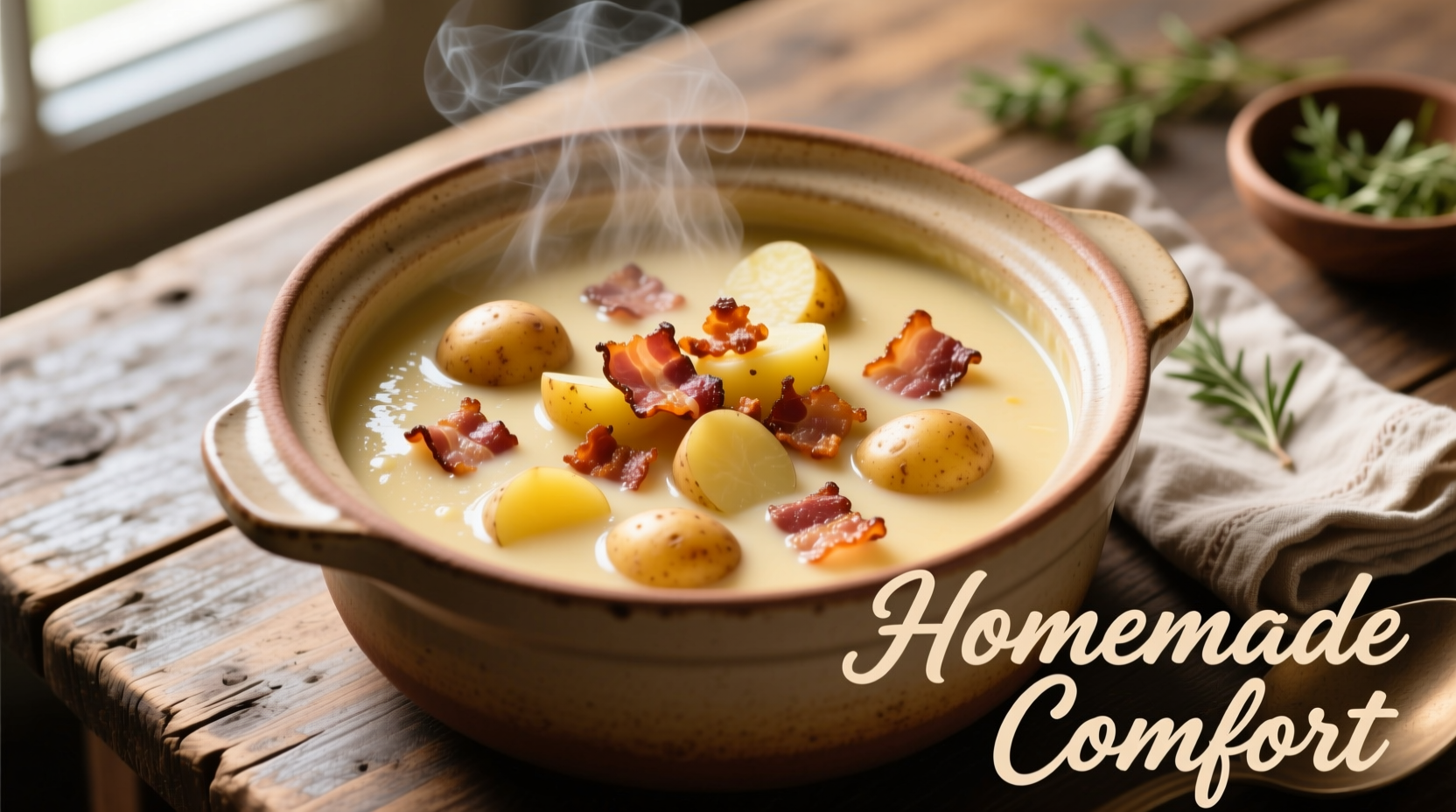Why Frozen Hash Browns Make the Perfect Slow Cooker Soup Base
Many home cooks avoid potato soup because peeling and dicing fresh potatoes feels tedious. Frozen hash browns solve this problem while delivering consistent texture. According to America's Test Kitchen research, pre-shredded frozen potatoes maintain structural integrity better than fresh when slow-cooked for extended periods. The controlled moisture content in frozen hash browns prevents the soup from becoming watery—a common frustration with traditional recipes.

Gathering Your Ingredients: What You'll Actually Need
Unlike complicated recipes that require specialty ingredients, this version uses pantry staples. The beauty of this approach? You'll spend less than $8 for a pot that serves six. Here's exactly what to grab:
| Ingredient | Amount | Why It Matters |
|---|---|---|
| Frozen hash browns | 32 oz (2 standard bags) | Provides consistent texture without pre-cooking |
| Chicken broth | 4 cups | Low-sodium allows flavor control |
| Heavy cream | 1 cup | Add after cooking to prevent curdling (USDA food safety guideline) |
| Butter | 3 tbsp | Creates flavor foundation for roux |
| All-purpose flour | 1/4 cup | Thickens soup without graininess |
Step-by-Step Cooking Process: No Culinary Degree Required
- Build flavor foundation: Melt butter in skillet over medium heat. Whisk in flour until smooth (about 2 minutes). This roux prevents flour clumps in your finished soup.
- Combine ingredients: Transfer roux to crock pot. Add hash browns, broth, garlic powder, onion powder, salt, and pepper. Stir gently.
- Slow cook properly: Cover and cook on LOW for 4 hours. Do not open lid—this maintains consistent temperature crucial for texture development.
- Finish with dairy: After cooking, stir in cream and shredded cheddar. Let sit 15 minutes before serving to allow flavors to meld.
Troubleshooting Your Potato Soup: Expert Fixes
Even perfect recipes encounter issues. Here's how to handle common problems:
Soup Too Thin?
Create a slurry: Mix 1 tbsp cornstarch with 2 tbsp cold water. Stir into soup and cook 20 more minutes on HIGH. The USDA confirms cornstarch maintains viscosity better than flour when reheated.
Soup Too Thick?
Add broth 1/4 cup at a time while stirring. Never use water—it dilutes flavor. The ideal consistency should coat the back of a spoon but drip slowly.
Dairy Curdling?
This happens when dairy hits temperatures above 180°F. Always add cream after cooking completes. Let soup cool 10 minutes first—a critical food safety step per USDA guidelines for dairy in slow-cooked dishes.
Serving and Storage: Maximizing Flavor and Freshness
For best results, let soup rest 15 minutes before serving. This allows starches to fully hydrate and flavors to balance. Garnish with:
- Crispy bacon bits (adds salty crunch)
- Chopped chives (fresh contrast to rich soup)
- Extra shredded cheese (melts perfectly on hot soup)
Store leftovers in airtight containers for up to 4 days. Reheat gently on stove—never in microwave, which creates uneven temperatures that degrade texture. Freeze portions for up to 3 months; thaw overnight in refrigerator before reheating.
Frequently Asked Questions
Can I use fresh potatoes instead of frozen hash browns?
Yes, but you'll need to peel and dice 3 lbs russet potatoes into 1/2-inch cubes. Fresh potatoes release more moisture, so reduce broth to 3 cups and add 15 minutes to cooking time. Frozen hash browns provide more consistent results for beginners.
How do I prevent my potato soup from becoming gluey?
Gluey texture comes from overworking starch. Never use a blender or immersion blender with potato soup—the mechanical action releases too much starch. Instead, use a potato masher for controlled thickness. Also avoid boiling after adding potatoes; gentle simmering prevents starch explosion.
Is it safe to leave dairy in the crock pot overnight?
No. The USDA Food Safety and Inspection Service states dairy products should never cook in slow cookers for more than 2 hours. Always add cream or milk after the main cooking cycle completes. Leaving dairy in during cooking creates a perfect environment for bacterial growth between 40°F-140°F.
What’s the best slow cooker temperature setting for potato soup?
LOW setting (200°F) for 4 hours yields superior results versus HIGH (300°F) for 2 hours. The slower cooking allows starches to fully hydrate without breaking down, creating creamier texture without glueiness. Temperature consistency matters more than total time.











 浙公网安备
33010002000092号
浙公网安备
33010002000092号 浙B2-20120091-4
浙B2-20120091-4